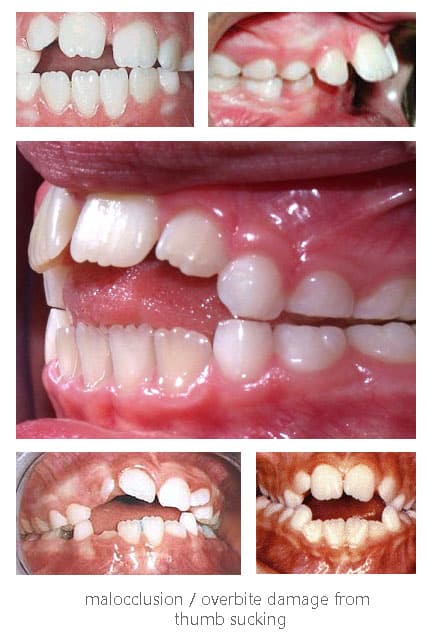10 Thumb Sucking Guard Tips For Instant Relief

Thumb sucking is a habitual behavior that can be challenging to break, especially in children. The persistence of this habit can lead to various dental and oral health issues, including misaligned teeth, altered bite, and increased risk of tooth decay. Moreover, thumb sucking can also have psychological implications, such as low self-esteem and social anxiety, as children become more aware of their habit and its social stigma. It is essential for parents and caregivers to address this issue promptly and effectively.
Understanding the Reasons Behind Thumb Sucking
Before diving into the tips for instant relief, it’s crucial to comprehend the underlying reasons behind thumb sucking. This habit often serves as a self-soothing mechanism, providing comfort and security, especially during times of stress, boredom, or fatigue. Children may also engage in thumb sucking due to habit formation, learned from repeated behaviors, or as a way to cope with emotional distress.
1. Identify the Triggers
Recognizing the situations, emotions, or events that trigger thumb sucking is vital. Once you’re aware of the triggers, you can develop strategies to avoid or manage them. For instance, if your child tends to suck their thumb when feeling anxious or stressed, you can teach them relaxation techniques, such as deep breathing, visualization, or positive self-talk.
2. Keep Those Hands Busy
Engaging your child’s hands in creative activities can help distract them from the urge to suck their thumb. Encourage them to participate in arts and crafts, play with playdough, or engage in other hands-on activities that promote fine motor skills and creativity. This approach can be particularly effective during periods of boredom or relaxation.
3. Use Positive Reinforcement
Praising and rewarding your child for their efforts to stop thumb sucking can be a powerful motivator. Consider creating a reward system, where your child earns stars, stickers, or small treats for each day they resist the urge to suck their thumb. This approach can foster a sense of accomplishment and reinforce positive behaviors.
4. Offer Alternative Comfort Objects
Providing your child with alternative comfort objects, such as a soft toy, blanket, or pacifier, can help them transition away from thumb sucking. These objects can serve as a substitute for the comfort and security associated with thumb sucking, allowing your child to gradually detach from the habit.
5. Make it Unappealing
Applying a bitter-tasting substance, such as nail polish or a commercial thumb sucking deterrent, to your child’s thumb can make the habit less appealing. This approach can be effective in breaking the habit, especially when combined with other strategies.
6. Practice Relaxation Techniques
Teaching your child relaxation techniques, such as deep breathing, progressive muscle relaxation, or visualization, can help them manage stress and anxiety without resorting to thumb sucking. These techniques can be practiced during daily routines, such as before bedtime or during calm activities.
7. Use Physical Barriers
Using physical barriers, such as bandages or gloves, can prevent your child from sucking their thumb. This approach can be particularly effective during sleep or periods of relaxation, when the urge to suck their thumb may be stronger.
8. Create a Thumb Sucking Journal
Encouraging your child to keep a journal or log of their thumb sucking episodes can help them become more aware of their habit. This increased awareness can facilitate self-regulation and motivation to change, as your child develops a better understanding of their behavior and its underlying causes.
9. Seek Professional Help
If your child’s thumb sucking persists despite your best efforts, consider consulting a pediatric dentist or orthodontist for guidance and support. These professionals can provide personalized advice, recommend specialized devices or appliances, and offer ongoing monitoring to ensure the habit is broken and oral health is maintained.
10. Be Patient and Consistent
Breaking a habit takes time, effort, and perseverance. It’s essential to be patient and consistent in your approach, as your child may experience setbacks or difficulties during the process. Celebrate small victories, and don’t hesitate to seek help when needed.
What are the most common reasons for thumb sucking in children?
+Thumb sucking in children is often caused by a combination of factors, including self-soothing, habit formation, and emotional distress. Identifying the underlying reasons for your child's thumb sucking is crucial in developing effective strategies to address the habit.
How long does it take to break the thumb sucking habit?
+The time it takes to break the thumb sucking habit varies depending on the individual child, their age, and the effectiveness of the strategies employed. With consistent effort, patience, and positive reinforcement, most children can overcome thumb sucking within a few weeks to a few months.
What are the potential risks associated with prolonged thumb sucking?
+Prolonged thumb sucking can lead to various dental and oral health issues, including misaligned teeth, altered bite, and increased risk of tooth decay. Additionally, thumb sucking can also have psychological implications, such as low self-esteem and social anxiety, making it essential to address the habit promptly and effectively.
By following these tips and being consistent in your approach, you can help your child overcome thumb sucking and develop healthier habits. Remember that breaking a habit takes time, effort, and perseverance, but with patience, positive reinforcement, and the right strategies, your child can overcome thumb sucking and achieve a healthier, happier smile.